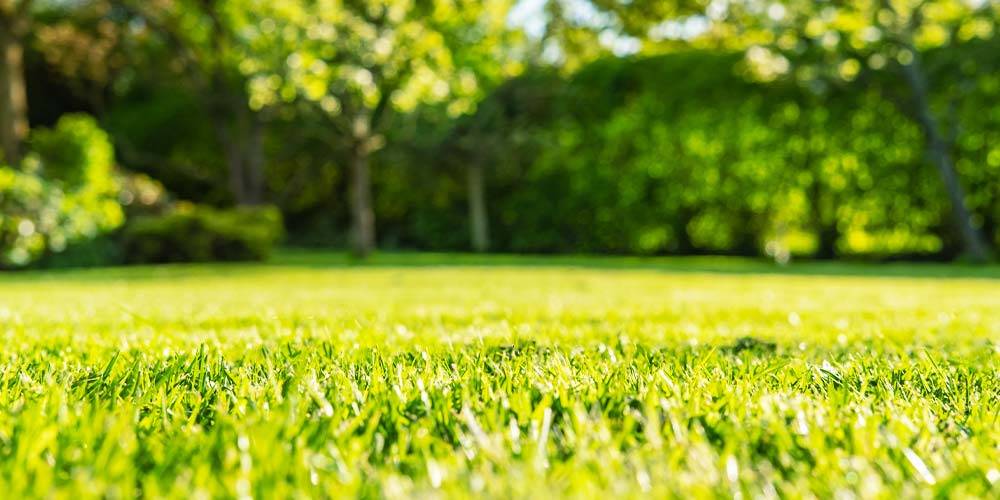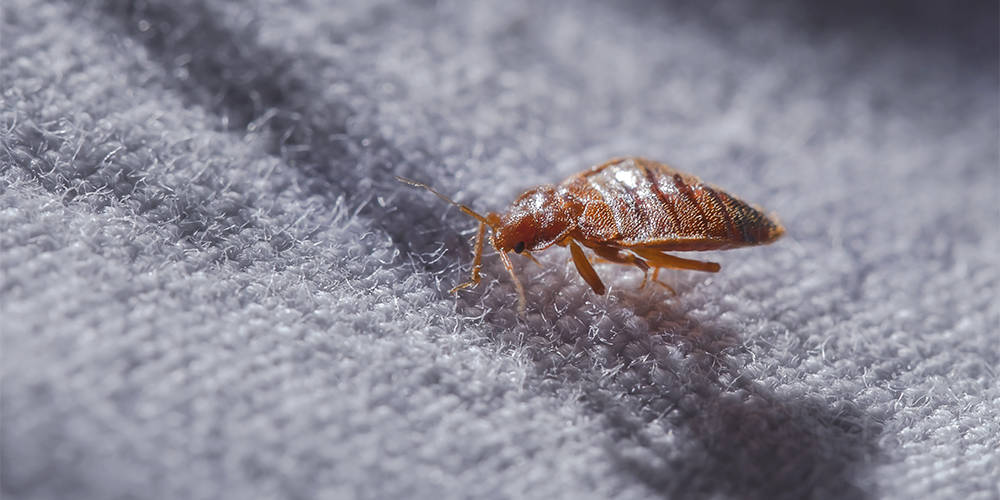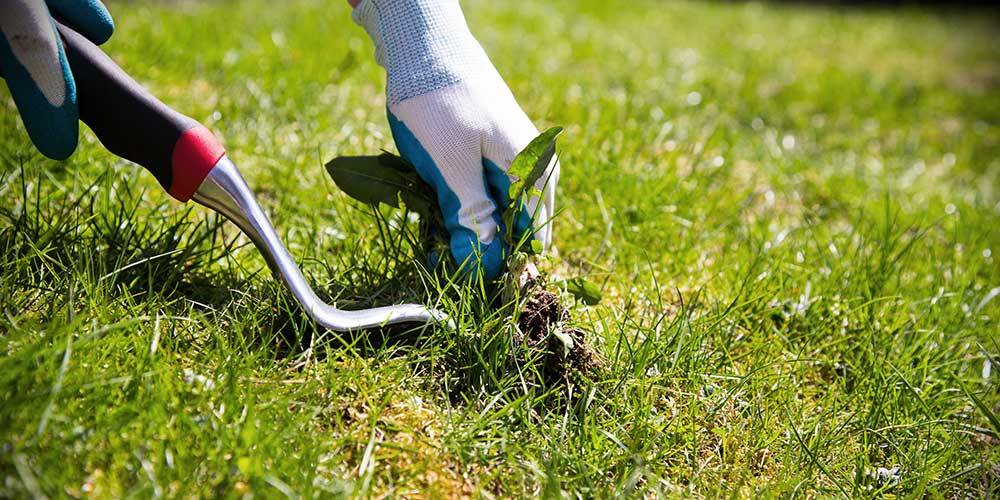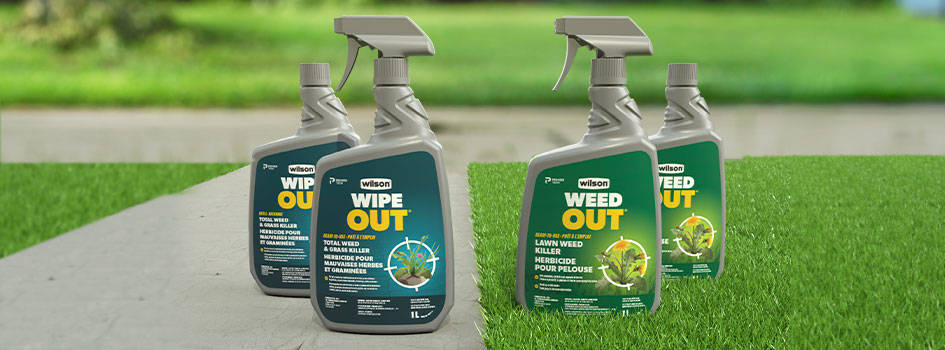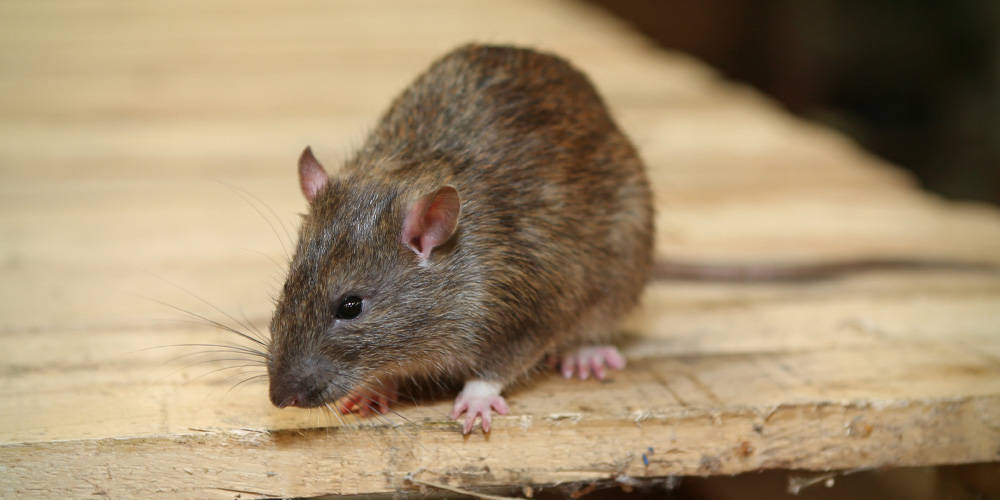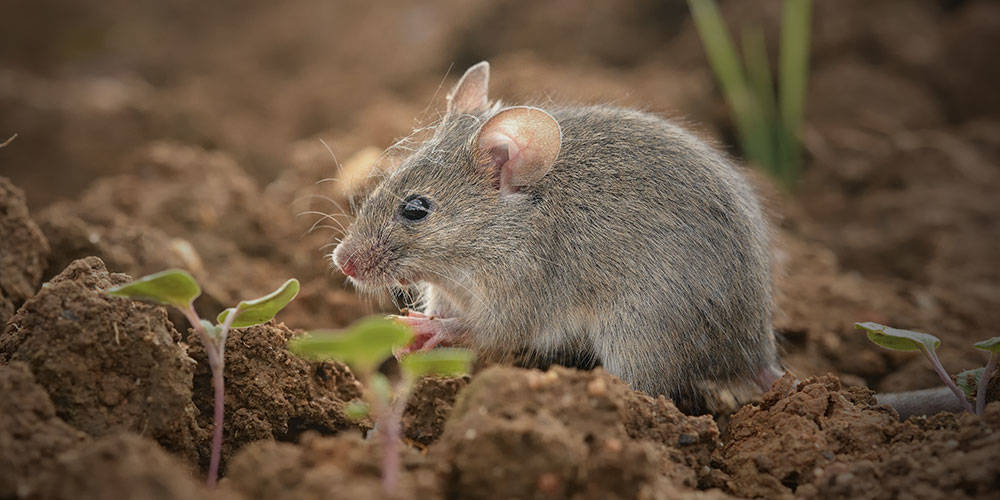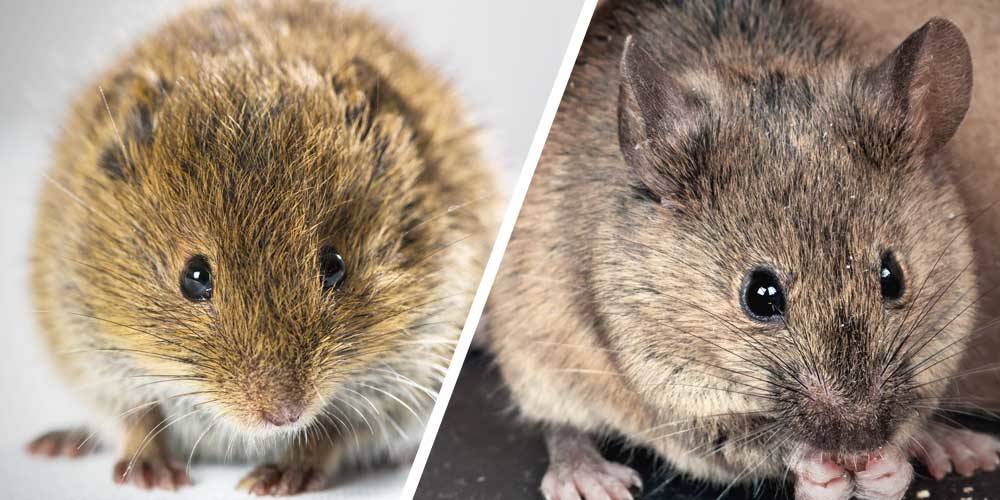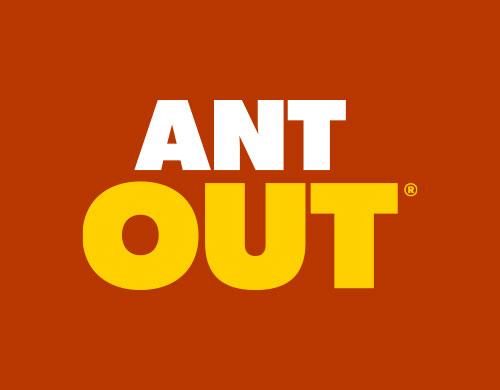How to treat a leatherjacket infestation?
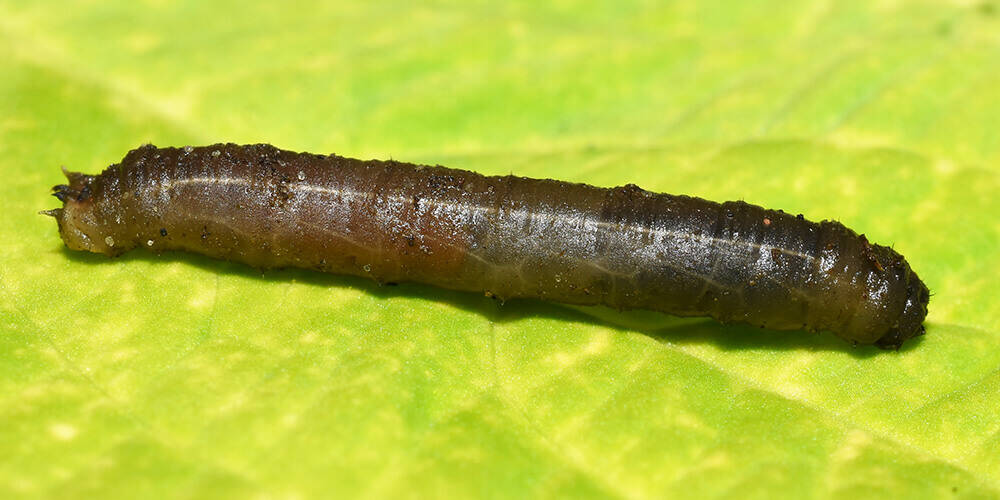
Have you noticed yellow patches in your lawn, or young beet plants cut near the crown? Leatherjackets are most likely behind all that.
What are leatherjackets?
Crane flies look like giant mosquitoes with long legs. They are also called “daddy longlegs”. As adults, they are harmless, but their larvae are heavy feeders and like to feast on… your lawn.
Measuring up to 4 cm in length, the larvae have a soft, cylindrical body that is grey-brown or grey-black in colour. They don’t have any legs and their retractable head is barely noticeable.
Life cycle of crane flies
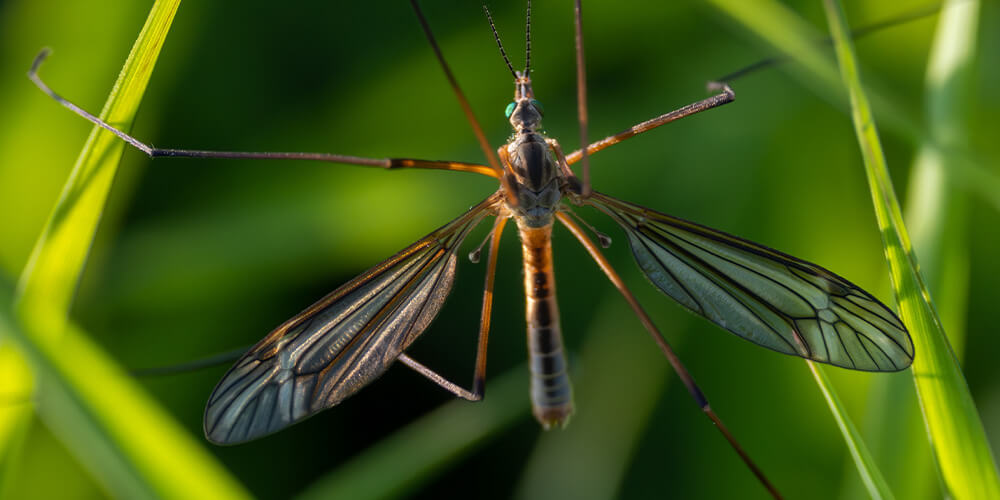
Crane flies are naturally attracted to lush, well-watered lawns. In summer, they are generally more active in the coolness of the morning or at nightfall.
Between August and October, adult females lay up to 300 eggs, and the larvae develop within two weeks. They spend the winter deep in the ground and wake up in spring. To continue their development, they feed on thatch and grass roots. They enjoy the humid spring weather.
What is the difference between white grubs and leatherjackets?
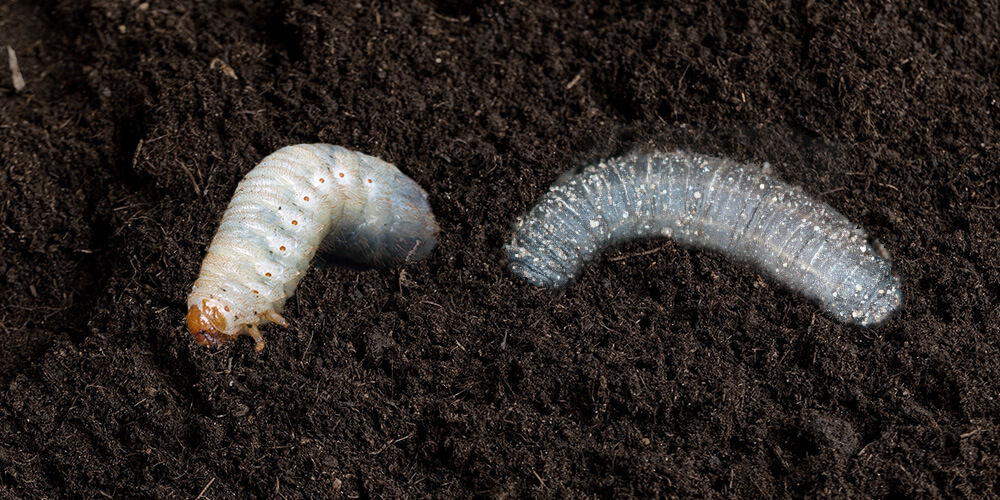
White grubs are the larvae of beetles such as Japanese beetles or European chafers. They are generally smaller but can be the same size as leatherjackets. They can also be found near grass roots at the same time of the year.
Unlike crane flies, white grubs have a milky white, C-shaped body. Their head is brown and they have 6 clearly visible legs.
Although both species can be present in the same lawn, it is important to identify them before treating as control methods differ.
Read our article to learn how to treat a white grub infestation: How to get rid of grubs | Wilson Control
How to recognize the presence of leatherjackets in a lawn?
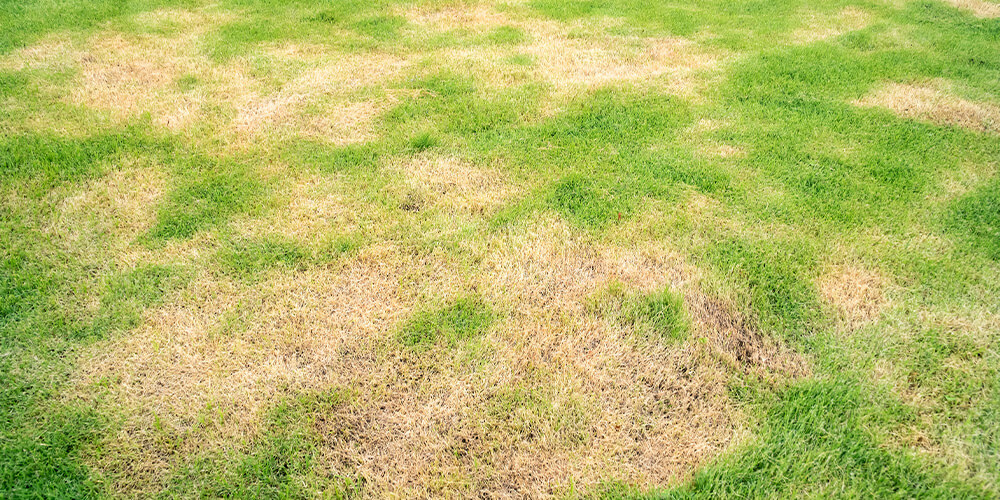
It’s not always easy to spot leatherjackets in a lawn. Like white grubs, they remain in the upper layer of the soil until they become adults.
Three ways to confirm their presence:
- Check your lawn with a flashlight at night. They sometimes move all the way up to the surface.
- Lift a little section of damaged grass.
- Insectivorous birds dig the soil to find and feed on larvae.
Characteristics of a lawn attacked by leatherjackets
Leatherjackets attack grass roots, but also plant crowns, which they cut, mainly in the most humid areas of the yard. They can also attack vegetable plants, which suffer the same treatment.
In lawns attacked by leatherjackets, the grass absorbs water and nutrients with difficulty. It quickly becomes weak, turns yellow and withers. When there is an infestation, large patches of dead grass can be seen.
Damage is more significant in the spring and fall. In summer, the larvae go deep in the ground, searching for coolness and moisture.
If the larvae aren’t spotted quickly and the grass isn’t treated with the right products, the damage can be considerable.
What is the best time to control leatherjackets?
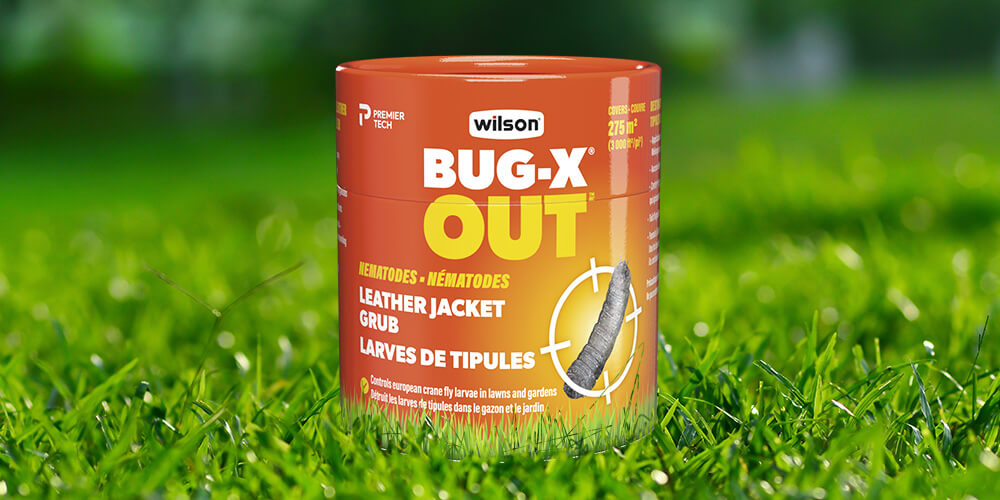
It is easier to eliminate leatherjackets when they are young and on the surface. Therefore, it is ideal to treat in early spring, before they become very active and cause significant damage to the lawn.
It is also possible to treat once the heat waves have passed, towards the end of August or in September, when the larvae come back to the surface to start feeding on grass roots again.
How to control leatherjackets?
The most effective and ecological method to control leatherjackets is to use nematodes. These microscopic worms are valuable allies in the garden to fight insect pests.
Nematodes penetrate the body of larvae and infect them with a deadly bacterium. Once their prey is exterminated, they multiply and return in search of a new host, quickly ending an infestation.
It’s a quick, easy and environment-friendly solution. Why use pesticides when you can rely on Mother Nature?
How to prevent a leatherjacket infestation?
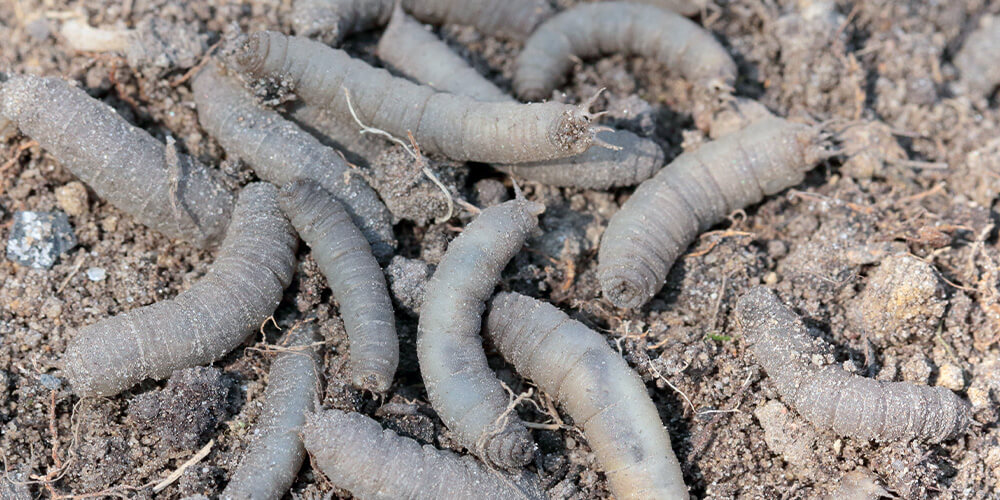
It's impossible to completely prevent the presence of leatherjackets in a lawn. However, there are some tips that can limit their presence or make your lawn more resistant to the attacks of insect pests.
- Grow a strong, healthy lawn: Leatherjackets prefer to attack plants whose roots are little developed. By mowing at the perfect height, by watering less often but deeply, and by fertilizing at the right time with the right products, your lawn will be more resistant and resilient.
- Aerate your lawn: Air and water will circulate better, and this will stimulate root development. Lawns with no stagnant water are less attractive to leatherjackets.
- Dethatch if necessary: Leatherjackets also feed on thatch. Rake your lawn to eliminate debris in spring and remove thatch when it is thicker than 1.25 cm. Use your mower bag to collect grass clippings in the spring and fall.
- Avoid excessive waterings: Water deeply, but less often.
- Level the soil: Use enriched lawn soil to fill in depressions and sow on loose soil to prevent water from stagnating in some places.
- Attract natural enemies : Birds, but also hedgehogs, shrews, bats and batrachians.
- Fix damaged areas in your lawn : Fix bare areas with an insect-repelling grass seed mix such as PRO-MIX Lawn Insect Defense Grass Seed.
